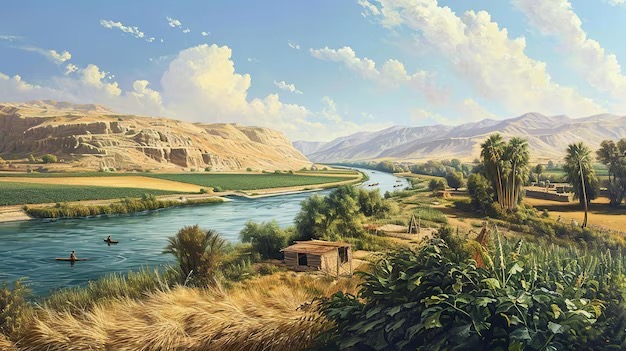Exploring the Significance and Symbolism of the Tigris River in the Bible

SHARE
The Tigris River, flowing with mesmerizing majesty through the heart of the ancient Near East, has held profound significance and symbolism in religious, historical, and cultural contexts. In the Bible, specifically in the Book of Genesis, the Tigris River is mentioned as one of the four rivers that emanated from the Garden of Eden, the legendary paradise where humanity’s journey began.
Genesis 2:10-14 provides a glimpse into the biblical narrative surrounding the Tigris River: “A river watering the garden flowed from Eden; from there it was separated into four headwaters. The name of the first is the Pishon; it winds through the entire land of Havilah, where there is gold. (The gold of that land is good; aromatic resin and onyx are also there.)
The name of the second river is the Gihon; it winds through the entire land of Cush. The name of the third river is the Tigris; it runs along the east side of Ashur. And the fourth river is the Euphrates.”
This passage not only marks the Tigris as one of the primal rivers of antiquity but also places it in a mystical landscape, symbolizing the origins of life and humanity. It imbues the river with a sense of sacredness, linking it to the divine and portraying it as a source of sustenance and vitality.
Beyond its portrayal in the Garden of Eden, the Tigris River holds broader significance in biblical narratives due to its geographical location. The Tigris, along with its counterpart, the Euphrates River, flows through the historical region of Mesopotamia, often referred to as the “cradle of civilization.”
Mesopotamia was home to some of the earliest human societies, including the Sumerians, Akkadians, Babylonians, and Assyrians. It was a land of great cities, such as Babylon and Nineveh, and a center of trade, culture, and intellectual achievement.
The biblical accounts frequently intersect with the history and culture of Mesopotamia. For example, the Israelites were exiled to Babylon, where they experienced both hardship and spiritual renewal. The prophet Daniel famously interpreted dreams for the Babylonian king Nebuchadnezzar, showcasing the cultural exchange and religious syncretism that characterized the region.
Moreover, the Tigris River serves as a backdrop for several biblical stories and prophecies. The prophet Jonah famously embarked on his reluctant journey to Nineveh, the capital of the Assyrian Empire, by sailing down the Tigris. His mission was to warn the city of impending divine judgment, highlighting the river’s role as a conduit for both physical and spiritual journeys.
In addition to its historical and narrative significance, the Tigris River holds symbolic resonance in biblical literature. It represents the flow of time, the passage of history, and the cyclical nature of human existence. Like the river’s currents, life moves forward inexorably, carrying civilizations, cultures, and individuals along its course.
Furthermore, the Tigris embodies themes of renewal and transformation. Just as the river’s waters nourish the land and sustain life, so too does the divine presence offer hope and redemption to humanity. The biblical narratives situated along the Tigris River depict moments of crisis and upheaval, but they also convey messages of resilience, faith, and the possibility of spiritual rebirth.
In conclusion, the Tigris River occupies a significant place in the tapestry of biblical imagery and symbolism. From its mythical origins in the Garden of Eden to its role in historical narratives and prophetic visions, the Tigris embodies themes of creation, journey, and redemption.
*Cover Photo/Thumbnail Photo: Freepik
RELATED ARTICLES

God’s Word on Caring for Animals That Bring You Gain

Generational Curses and Sirach’s View on Godless Offspring










